Bhutan is indeed a very special place, in the real sense, a Shangri La where there are no man-made attractions to attract travellers instead tourists are privileged and fascinated to experience and cherish memories of real culture & nature preserved in its magical purity. In the modern world where commercialization supersedes everything, Bhutan is a perfect example of balanced & holistic development, an exceptional equilibrium between material growth, spirituality, ecology & environment and its rich cultural heritage.
Here are some of the unique characteristics, difficult to find anywhere in the modern world but Bhutan is setting an example for other countries to follow:
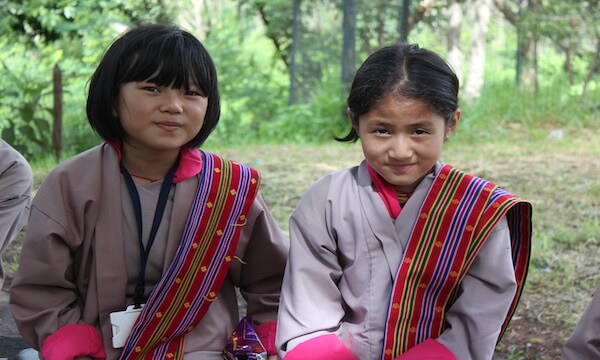 Gross National Happiness (GNH) Prioritized Over GDP
Gross National Happiness (GNH) Prioritized Over GDP
Bhutan is famously the only country in the world to prioritize Gross National Happiness (GNH) over GDP. GNH as a development philosophy in Bhutan dates back as far as the 1970s, when the fourth King, His Majesty Jigme Singye Wangchuck, announced that Bhutan would pursue ‘happiness’ in its path towards development rather than measuring progress merely through growth in Gross Domestic Product (GDP). Bhutan’s GHN approach and concrete actions in this direction have certainly raised its profile on the international stage and set a practically successful example for other countries to follow. The concept of GNH has been explained by its four pillars: good governance, sustainable socio-economic development, cultural preservation and environment conservation while the four pillars have been further classified into the following nine domains in order to create a widespread understanding of GNH and to reflect the holistic range of GNH values: psychological well-being, health, education, time use, cultural diversity and resilience, good governance, community vitality, ecological diversity and resilience and living standards.
Carbon Negative Country & Ecological Hot Spot
When the world is struggling to reduce carbon emissions, the Kingdom of Bhutan is already carbon negative and effectively, it means the greenhouse gas pollution the country produces is not only offset by its extensive forests but also in the negative due to the generation and export of renewable energy. Carbon dioxide is the leading greenhouse gas emission produced by human activities and high levels of carbon dioxide increase the amount of heat that is trapped in the atmosphere and this is one of the causes of climate change. Most countries produce far more carbon dioxide than the world’s oceans and plant life are able to absorb and these countries are contributing to the effects of climate change in a big way. But the Kingdom of Bhutan stands out from the crowd. About 72% of the country is covered in trees. This large amount of tree cover has seen Bhutan becoming a carbon sink – meaning that it absorbs more carbon dioxide than it produces. Bhutan absorbs roughly seven million tons of carbon dioxide annually and only produces around two million tons. Bhutan also exports most of the renewable hydroelectric power that it generates from its rivers. This counteracts the country’s contribution towards carbon emissions by millions of tons each year.
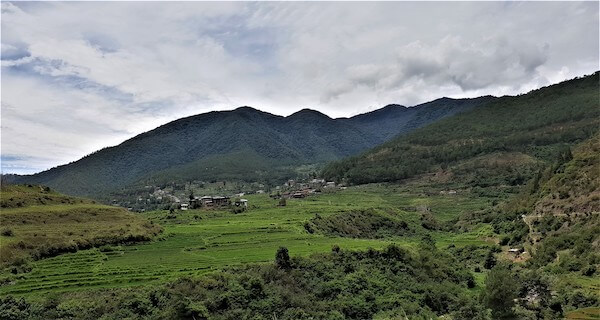 Bhutan is also an exclusive biodiversity hotspot in the world where forest coverage has increased to 72% of the country’s total area. It has six major agro-ecological zones equivalent to certain altitudinal ranges and climatic environments; alpine, cool temperate, warm temperate, dry subtropical, humid subtropical and wet subtropical. The country possesses about 5600 flowering plant species, 300 medicinal plants, 423 species of orchids, 411 species of ferns, 232 species of moss, 329 species of mushroom, around 46 rhododendron species and more than 80 species of agricultural crops. Due to its strict and immaculate conservation efforts, Bhutan has a flourishing population of some of the rarest animals on earth and is rightly classified as the last biodiversity hotspot in the world. The tiny Himalayan Kingdom is home to more than 770 species of birds, 200 species of mammals, more than 110 species of fish and houses some of the rarest and endangered species on the planet such as the red panda, the black-necked crane, the white-bellied heron, the golden langur, snow leopard, tiger, one-horned rhino and many others.
Bhutan is also an exclusive biodiversity hotspot in the world where forest coverage has increased to 72% of the country’s total area. It has six major agro-ecological zones equivalent to certain altitudinal ranges and climatic environments; alpine, cool temperate, warm temperate, dry subtropical, humid subtropical and wet subtropical. The country possesses about 5600 flowering plant species, 300 medicinal plants, 423 species of orchids, 411 species of ferns, 232 species of moss, 329 species of mushroom, around 46 rhododendron species and more than 80 species of agricultural crops. Due to its strict and immaculate conservation efforts, Bhutan has a flourishing population of some of the rarest animals on earth and is rightly classified as the last biodiversity hotspot in the world. The tiny Himalayan Kingdom is home to more than 770 species of birds, 200 species of mammals, more than 110 species of fish and houses some of the rarest and endangered species on the planet such as the red panda, the black-necked crane, the white-bellied heron, the golden langur, snow leopard, tiger, one-horned rhino and many others.
Love & Admiration for Bhutan’s National Dress
Bhutan’s national dress was codified in the 17th century during the reign of the famous Rinpoche and ‘Father of Bhutan’, Zhabdrung Ngawang Namgyal. In 1989, during the reign of the fourth King, a specific law was enacted to require all Bhutanese to wear the national dress for professional and government positions and for formal occasions.
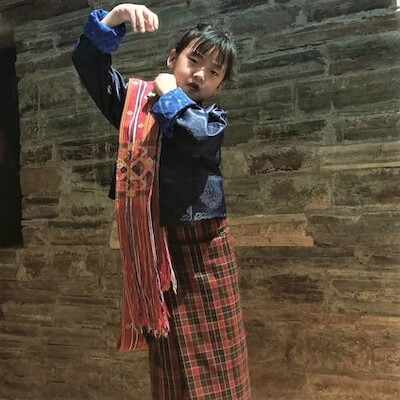 Bhutanese textiles are recognized worldwide for their vibrant colours, sophistication, variety of patterns, and intricate dyeing and weaving techniques. Men wear knee-length robe called 'Gho', which is tied at the waist by a cloth belt known as 'Kera'. For formal occasions, the 'Gho' is accompanied by an additional long scarf - 'Kabney' and the colour of kabney represents the social ranks: Saffron Kabney for the Druk Gyalpo (the King) and the Je Khenpo (the Chief Abbot), Orange Kabney for Lyonpos (Ministers and the other members of Government), Red Kabney for Dashos (male members of the Royal family and higher officials), Blue Kabney for members of Parliament, white Kabney for commoners. Women wear 'Kira', a long, ankle-length dress accompanied by a light outer jacket 'Tego' with an inner layer known as a 'Wonju'. A long scarf - 'Rachu' is hung over a woman’s shoulder as an additional accessory.
Bhutanese textiles are recognized worldwide for their vibrant colours, sophistication, variety of patterns, and intricate dyeing and weaving techniques. Men wear knee-length robe called 'Gho', which is tied at the waist by a cloth belt known as 'Kera'. For formal occasions, the 'Gho' is accompanied by an additional long scarf - 'Kabney' and the colour of kabney represents the social ranks: Saffron Kabney for the Druk Gyalpo (the King) and the Je Khenpo (the Chief Abbot), Orange Kabney for Lyonpos (Ministers and the other members of Government), Red Kabney for Dashos (male members of the Royal family and higher officials), Blue Kabney for members of Parliament, white Kabney for commoners. Women wear 'Kira', a long, ankle-length dress accompanied by a light outer jacket 'Tego' with an inner layer known as a 'Wonju'. A long scarf - 'Rachu' is hung over a woman’s shoulder as an additional accessory.
Locals’ love and admiration for their national heritage are amazing including its manifestation in form of national dress. From young school students to senior citizens and office goers in national dress love, respect and admire the country’s this unique identity.
Last Vajrayana Buddhist Country
Bhutan is often referred to as the last stronghold of Vajrayana Buddhism. In-country, Buddhism was first introduced by the Indian Tantric master Guru Padmasambhava in the 8th century. Until then the people use to practice Bonism, a religion that worshipped all forms of nature, remnants of which are still evident in some remote parts of the country. Notably, the Bhutanese constitution guarantees freedom of religion and citizens and visitors are free to practice any form of worship so long as it does not impinge on the rights of others.
The Buddhism practised in the country today is a vibrant religion that permeates nearly every facet of life and manifested in Dzongs, monasteries, stupas, prayer flags, and prayer wheels. The chime of ritual bells, the sound of gongs, people circumambulating temples and stupas, fluttering prayer flags, red-robed monks conducting rituals stand as testaments to the importance of Buddhism in local’s life.
The form of Buddhism practised in Bhutan has also absorbed several features of Bonism such as nature worship. For instance, mountain peaks were considered as the abodes of guardian deities (Yullha), lakes inhabited by lake deities (Tshomem), cliff deities (Tsen) resided within cliff faces, the land belonged to subterranean deities (Lue and Sabdag), water sources inhabited by water deities (Chu giLhamu), and dark places haunted by the demons (due).
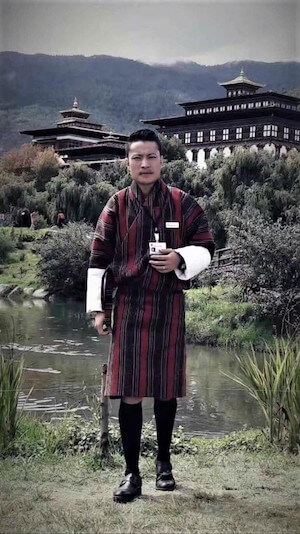 Locals Conduct Guided by Driglam Namzha, Bhutan’s Code of Etiquette
Locals Conduct Guided by Driglam Namzha, Bhutan’s Code of Etiquette
'Driglam Namzha' is literally described as Bhutan’s code of etiquette. 'Drig' denotes order, norm and conformity while 'Namzha' refers to concept or system. In essence, 'Driglam Namzha' deals with indecent physical, verbal and mental behaviours and adopting civil and courteous conducts of the body, speech and mind. Our external behaviour should reflect the wholesome values such as humility, self-control, calm and compassion we cherish inside and also display sensitivity and respect to others. Precisely, Driglam Namzha is the official behaviour and dress code of Bhutan and locals’ conduct is hugely guided by a set of norms that indicates a strong value system and sensitivity and respect for cultural heritage.
No Traffic Lights in Bhutan
Bhutan is the only country in the world with NO traffic lights but still, traffic appears to be really well organised even in the relatively busy capital city Thimphu. Unlike many other parts of South Asia, here lane driving is quite popular and followed while honking is almost unnoticed. The vehicle drivers strictly adhere to road safety and traffic norms and avoid any kind of chaos on road.
Non-Smoking Country
Bhutan is probably the only and one of the first countries in the world to have a complete ban on tobacco and tobacco products. The country has a fairly long history of tobacco control and as early as 1729, it perhaps became the first country in the world to have any kind of tobacco regulation when the supreme leader Zhabdrung Ngawang Namgyal passed a law against tobacco use. The recent Tobacco Control Act of Bhutan came into force from the year 2010 which regulates tobacco and tobacco products, banning the cultivation, harvesting, production and sale of tobacco and tobacco products. No tobacco products are available or sold in the country however, tourists are allowed to bring cigarettes for their personal consumption and can smoke at designated smoking areas only. Also, cigarette/cigars brought are subjected to payment of 100% Custom duty and 100% Sales tax.
Bhutan Has Some of The World’s Highest Unclimbed Mountain Peaks in The World
Known as the ‘Mountain Fortress of the Gods’, Bhutan is home to some of the highest unclimbed mountain peaks in the world. Gangkhar Puensum meaning ‘White Peak of the Three Spiritual Brothers’, perched on the Bhutan-Tibet border is Bhutan’s tallest mountain at 7,570m and the world’s 40th highest peak, also counted as the world’s highest unclimbed mountain. Other unclimbed peaks in Bhutan are Tongshanjiabu (7,207m) and Teri Kang (7,125m). At an elevation of 7,538m, Kula Kangri is the second highest peak of the country, located in a remote region of northern Bhutan and surrounded by several unclimbed peaks.
The Bhutanese consider the mountains to be the sacred abode of the gods & spirits thus respecting locals’ sentiments since 1994, mountaineering expeditions are totally restricted in the country, for mountains over 6,000m.
 Use of Chilli in Bhutanese Cuisine
Use of Chilli in Bhutanese Cuisine'Dalle Khursani' known as the fireball is one of the hottest chillies in the world and local vendors from Tsirang and Wangdue districts are some of the main suppliers of 'Dalley Pickle'. The fermented pickle is supplied to the rest of the districts and some are exported beyond Bhutan also.
Aside from the use of Chillis on the platter, Bhutan is also a place reported to use burning chilli pepper to drive away evil spirits. There is another story of mountains, cold winters, hot and humid summers, and the power of chilli to help stay warm.
Bhutan is a Highly Safe Destination with An Extremely Low Crime Rate
In comparison to the crime rate noticed in different parts of the world or to its neighbouring countries, Bhutan has extremely low reported crimes and can be rated as one of the safest destinations to travel. Incidents of petty crimes are only occasionally reported in the country while violent crimes are uncommon. Not even a solo traveller will feel insecure at any point of his / her journey to Bhutan. Some of the factors attributed to the low crime rate in the country are: its small size and topography, Buddhist philosophy and love, compassion and respect for all living beings, sense of contentment, relatively low level of unemployment and good governance.
Cleanliness is Next to Godliness – The Bhutan Perspective
Bhutan is one of the few countries where up keeping the environment and eco-responsibility is studied and accorded even more important than growing the economy. Tourists are attracted to the country’s natural & cultural resources through snow-capped mountains, lush paddy fields, natural waterfalls, walking or biking trails, picturesque villages, strategically & picturesquely located temples and monasteries and all sites are immaculately maintained. Locals of all age groups display a high level of sensitivity and awareness to protect, preserve and conserve their national heritage and participate from time to time in various cleaning campaigns thus ensuring the highest standard of upkeep & maintenance. Travellers are pleasantly surprised here and appreciate the cleanliness standard of tourism sites and the country as a whole.
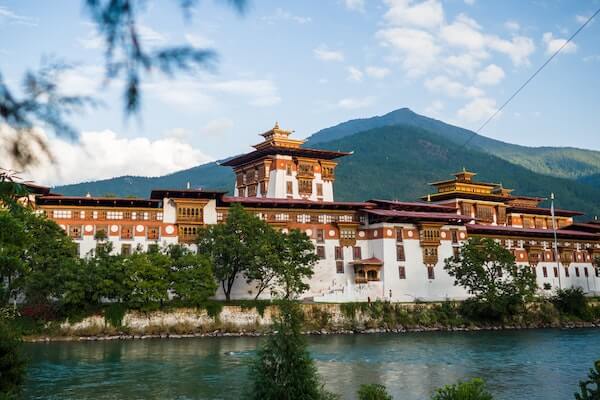 Unique Architectural Patterns
Unique Architectural Patterns
Bhutanese architecture is, without doubt, one of the best expressions of the country's unique character. Almost completely isolated for many centuries by its complex geography, Bhutan has indeed seen very few changes in its architectural pattern since earlier times. Displaying a great sense of innovation, Bhutanese architects made each dzong and monastery a unique creation, different from all others but at the same time maintaining a perfect unity of architectural style throughout the country. Each of these buildings was designed and built to harmonize with the environment and fulfil certain specific functions and many of them are true masterpieces. The Bhutanese buildings are characterized by sloping roofs, window frames and roofs crafted with intricate artwork, pillars carved with Buddhist symbols and arts, bright colours, complex as well as simple Buddhist symbols and mandala paintings on walls and the craftsmanship is so detailed and extraordinary that has made the Bhutanese architecture distinct from the rest of the Himalayan countries. All buildings in Bhutan including religious & administrative institutions, Government and private offices, town or village houses, all follow traditional architectural patterns coherent with the landscape and are charming in appearance.
Use of Alcohol in Bhutan
Socially and culturally consumption of alcohol is widely accepted in Bhutanese society and no social stigma is attached to drinking. The usual barriers and deterrents to using alcohol inherent in certain South Asian or other societies are not so apparent in Bhutan. In traditional Bhutanese society, people share drinks when they meet or depart. Alcohol has ritualistic and symbolic functions also and it is used to please deities and as a vital substance of various offerings. Alcohol also finds a significant place during mourning among many communities in Bhutan. Families, friends, and well-wishers bring alcohol to pay condolence to bereaved families after a death. Festivals and other important social events are organised with alcohol as a central enhancement substance. Interestingly, Bhutanese archery is probably the only sport in the world today where drinking is allowed during the game. Alcohol is traditionally served during archery competitions in the country and it is believed to enhance the confidence of the archer by releasing inhibitions thereby contributing to the enjoyment of the game. The local alcoholic drink 'Ara' has been described as one form of intangible cultural heritage made from barley, rice, maize, millet or wheat and may be either fermented or distilled.
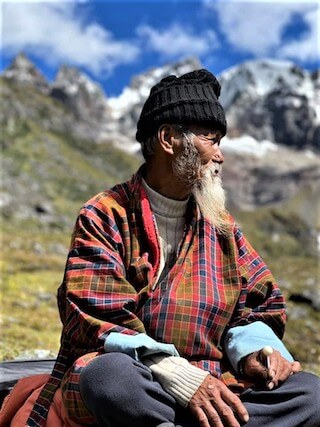 Free Education & Healthcare For All Citizens
Free Education & Healthcare For All Citizens
Bhutan recognizes health as a prerequisite for economic and spiritual development, poverty reduction and the road to Gross National Happiness. The National Health Policy aspires to be congruent with the philosophy of Gross National Happiness and reflects various inputs ranging from social, spiritual, cultural and environmental aspects. Basic public healthcare is free in the country, as reflected in the Constitution of Bhutan: The State shall provide free access to basic public health services in both modern and traditional medicines. Even referrals outside the country are provided at the nation’s expense. Apart from its own citizens Bhutan even provides free health care to visitors and tourists, in case they need it.
The Royal Government of Bhutan (RGoB) recognizes education as a basic right and a prerequisite for achieving the country’s social, cultural and economic goals and continues to accord high priority to education as an engine of growth in the nation-building process. Bhutan provides free basic education from grade PP at the entry age of six till grade XII. The selection of students for government scholarships to pursue higher and tertiary education is strictly based on merit and availability of slots as per the human resource needs of the country.
Institutionalisation of Zorig Chusum
Bhutan is proud of its artistic heritage and an essential part of its heritage are the thirteen arts & crafts known as 'Zorig Chusum' ('Zo' - to make, 'rig' - science & 'chusum' - thirteen). These arts were formally codified in the 17th century during the reign of Gyalse Tenzin Rabgay, the fourth temporal ruler of Bhutan. The thirteen arts and crafts are categorized as follows:
•Lhazo (Painting)
•Parzo (Carving)
•Thangzo (Weaving)
• Dezo (Paper-making)
•Jinzo (Clay arts)
•Dozo (Stone carving)
•Trozo (Gold & silver works)
•Shingzo (Wood-working)
•Lungzo (Metal casting)
•Shagzo (Wood-turning)
•Garzo (Black-smithing)
•Tshazo (Basketry)
•Tshemzo (Needle-work)
'Zorig Chusum' is manifested as a living tradition in various aspects of Bhutanese society and its preservation and promotion are accorded high priority. The Institute of Zorig Chusum, established in 1971, has two schools to preserve and promote Traditional Art and Crafts of Bhutan through the establishment of systematic education and training system.
The Goal of 100% Organic Nation
Bhutan is destined to become the world’s first 100% organic nation. Since the first announcement of the 100% organic goal in 2008, the consumption of synthetic fertilizers & agrochemicals, pesticides have been gradually phased out. Organic agriculture in Bhutan is also considered a strategy to make agriculture more sustainable. In animal husbandry, the use of artificial growth hormones is banned, and antibiotics are only allowed in exceptional cases. Part of the 100 per cent organic policy rationale is also to promote Bhutan as an organic brand internationally which would help commercialise small-holder agriculture and add value to the tourism sector. Bhutan, unlike many South Asian countries, has achieved a relatively high degree of food security and in spite of a lower yield in organic agriculture of about 25.4%, the country is still in a better position to go for a greater and sustainable organic model. Besides environmental conservation, which is one of the four pillars of Bhutan’s Gross National Happiness philosophy, there are also other motifs for this policy, such as promoting the brand ‘Bhutan.
Information and Media Landscape in Bhutan
The information and media landscape in Bhutan have undergone unprecedented changes since the start of the country’s first national newspaper and radio station in the 1980s followed by television and Internet in 1999 and mobile telephony in 2003. Information and media are a vital force that touches all national priorities and is recognized as the most appropriate tool to overcome the challenges posed by the rugged terrain of the county and help the nation to deal with the globalised world in the era of information and technology. The introduction of television and the Internet in June 1999 has been a significant development in the growth of Bhutanese media.
Soaking in Unique Hot Stone Bath
One of the distinctive experiences in Bhutan is the traditional hot stone bath ('Dotsho' or 'Menchu'). Practised since ages by locals, it is not only used as a comforting soak but to treat various ailments like all kinds of aches and pains. The river stone (pebbles) are collected and heated up in fire for several hours until it becomes red hot. Then heated stones are placed in a section of the bathtub which is filled with water and Artemesia leaves. The stones heat the water and it is believed that their precious, key minerals are released to heal various kinds of ailments. This ritual has been used by native Bhutanese for years to cure themselves of disease and unique experience for travellers as well.
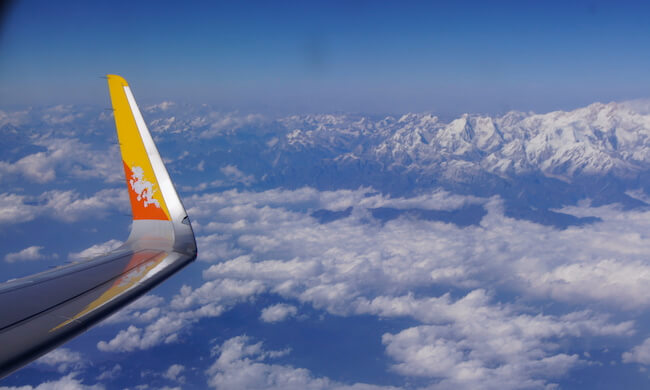 Flight to Bhutan is One of The Most Spectacular & Fascinating in the Himalayas
Flight to Bhutan is One of The Most Spectacular & Fascinating in the Himalayas
Bhutan’s Paro international airport, located 1.5 miles above sea level and surrounded by sharp peaks of up to 18,000 ft tall, is ranked as one of the trickiest in the world for landing and take-offs but the journey to this amazing Dragon Kingdom offers breath-taking views and an exciting experience. So treacherous is the landing here that as of date only twenty-four pilots in the world are qualified to land at this airport and the runway is just 6,500 feet long so even shorter than the airport’s elevation.
The flight to/from Paro International Airport offers one of the rare opportunities to view some of the tallest mountain peaks in the world. The skies are usually clear from mid-September to early June, allowing a magnificent view of the Himalayan ranges. The aircraft cruises at the altitude of 26,000 ft. to 39,000 ft which allows breath-taking vistas of the Tibetan plateau- the roof of the world.
A few minutes after the take-off from the Paro airport travellers would be able to see Mount. Jomolhari (7,314m), the second-highest mountain in Bhutan. As the aircraft enters the Indian airspace over the neighbouring state of Sikkim in India, the majestic Mt. Kangchenjunga (8,586m) appears insight.
En route to Kathmandu (Nepal), travellers are mesmerised by a cluster of mountains from the right side of the aircraft. The pyramid shape peak in the middle is the Mount. Everest (8,848m), the tallest mountain on the planet. The peaks in the front of Everest are Lhotse (8516 m), the fourth tallest mountain in the world and Nuptse (7,861). The distinctive peak on the right is Mt. Makalu (8,475 m), the fifth highest mountain in the world.
The view from the skyline both while flying into Bhutan or return leave travellers sky struck and fascinated with the stunning views of peaks amid dancing clouds and it is indeed a lifetime experience, not to be missed.
No Homeless People in Bhutan
Homelessness in Bhutan is virtually non-existent. Any Bhutanese citizen who loses a home due to any reason, can approach King’s office and plead for assistance and he or she is granted suitable land to build a house, do farming and live a graceful life. This is amazing and truly endorses the philosophy of Gross National Happiness and the peaceful co-existence of all beings.
Bhutan Has The World Record of Planting 49,672 trees in One Hour
The people of Bhutan lay great emphasis on the protection and preservation of its environment and this approach has helped to keep about 72% of the country under forest cover. In 2015, coinciding with the Social Forestry Day on 2nd June, a team of 100 volunteers created the world record of planting 49,672 trees in one hour which is entered in the Guinness book of world records. This event was organised by Bhutan Eco-Green Initiative Network (BEGIN), in collaboration with the Ministry of Agriculture & Forests during which a number of indigenous tree species were planted including the Blue Pine and Cypress.
Doma, An Integral Part of Bhutanese Culture
Made up of three main ingredients: 'Doma' or 'areca nut' (Areca catechu), 'Pani' or 'betel leaf' (Piper betal) and 'Tsune' or 'lime' (calcium carbonate), 'Doma' is an essential part of Bhutanese society and in fact, consumed on all occasions; during rituals and ceremonies, after meals, while meeting of friends and appreciated by all section of society. Locals usually store it in a cloth pouch called 'Kaychung' or in a small bamboo basket 'bangchung' and can chew it all day long. They also believe that it keeps them warm during the winter season.
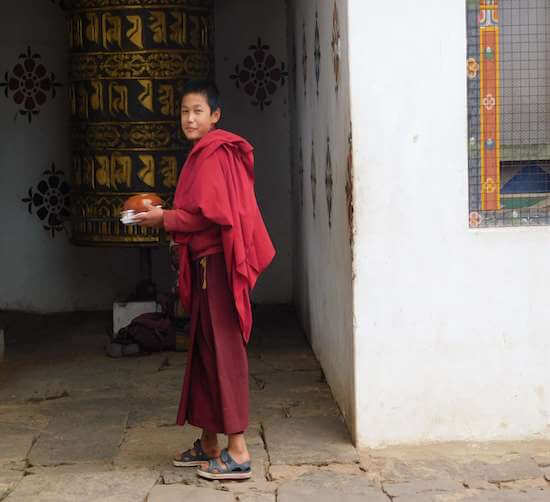 Bhutan Invites Us to Take Stock of A Deeper Meaning of Our Lives
Bhutan Invites Us to Take Stock of A Deeper Meaning of Our Lives
Quite realistically, a trip to Bhutan encourages visitors to think about a bigger purpose of life that one may not have time for during busier and more economically challenging places and times. The ultimate lesson of Bhutanese culture is that we are all connected. The locals are wonderful in sharing their stories and perspectives which means if one willing to listen adopt and practise, then there are many practical gems to choose from while interacting with locals. During a tour to Bhutan, there is a physical journey through the history, the temples and the monasteries, the fascinating landscape, the deep valleys and gorges, the rushing waterfalls, the aquamarine rivers roaring down the snow-capped peaks. Then there is an inner journey in which visitors can travel in their own hearts and their mind over some of the paths that the Bhutanese people follow in their own learning and study, their beliefs, their spiritual practices and their way of life. Along the way, travellers are in fact invited to immerse themselves in a way of seeing the world differently, which is one of the greatest gifts of the Bhutan trip. Bhutan can be a major catalyst for personal transformation.